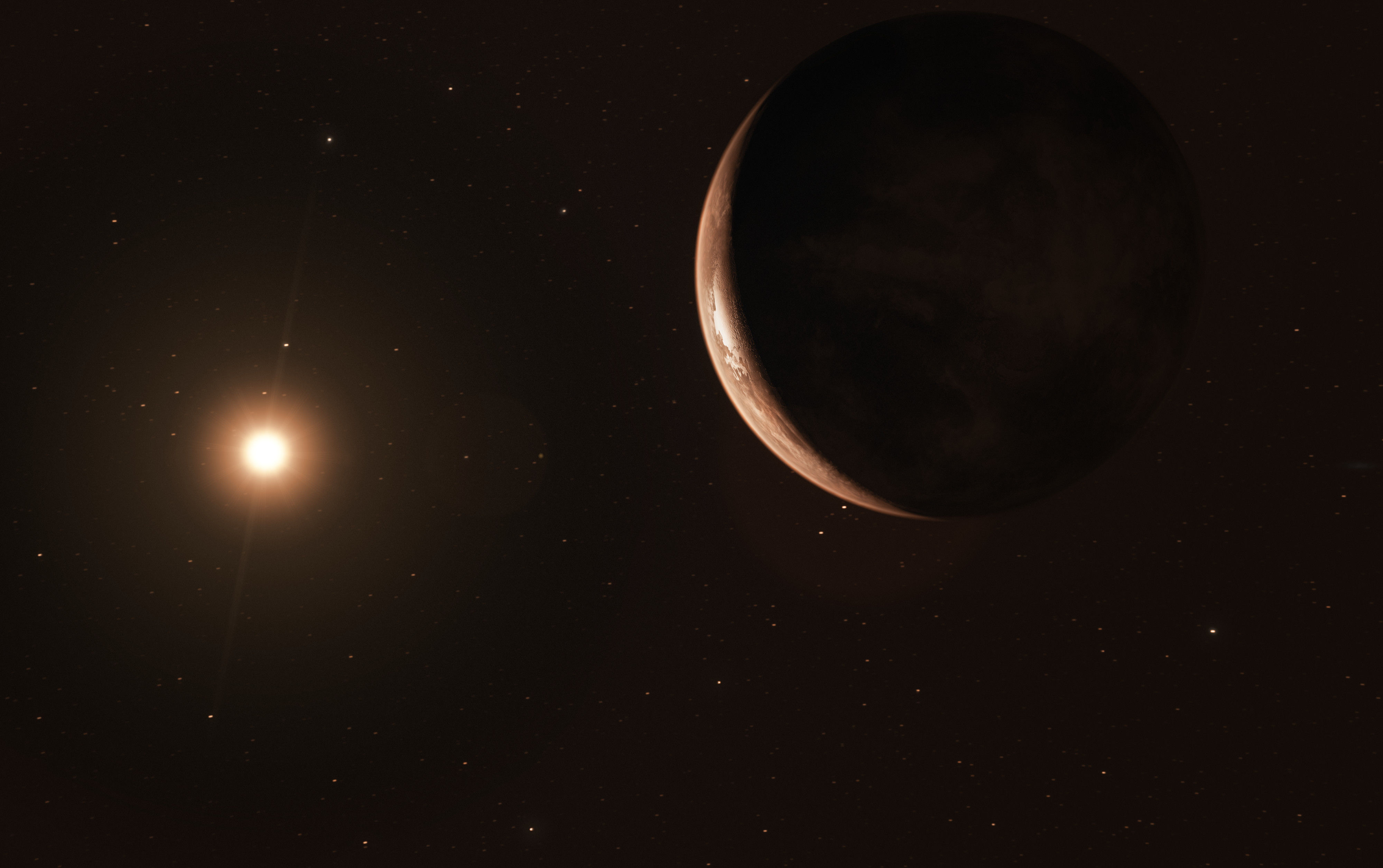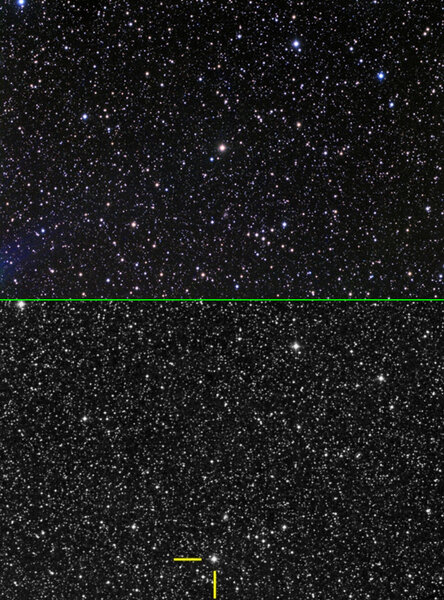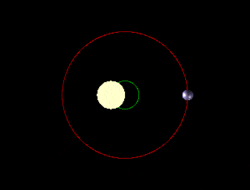Create a free profile to get unlimited access to exclusive videos, sweepstakes, and more!
Big news: A planet for Barnard’s Star… the fourth closest star to our own!

A team of astronomers have announced some very exciting news: They have discovered a planet orbiting Barnard's Star, the fourth closest star to the Sun!
To cut to the chase, the exoplanet is a super-Earth, with at least 3.2 times Earth's mass (and probably more). It takes 232.8 days to orbit the star once, which means it's much closer to the star than Earth is to the Sun. Despite that, the planet is incredibly cold, with a temperature no lower than -170°C, though maybe a touch less frigid… so Earth-like it ain't.
Still! There's a whole lot of reasons this is such cool news. For one, Barnard's Star is close, just 5.95 light years away. It's actually the closest single star to us; the three stars closer are all part of the same Alpha Centauri ternary star system. It's a red dwarf, the most common kind of star in the Universe, adding to our confidence that planets are common around these tiny stars. Also, astronomers have been searching for planets around Barnard's Star for a long time, so this is the culmination of a monumental effort.
Red dwarfs are stars more or less like the Sun — in that they fuse hydrogen into helium in their cores to generate energy — but they are smaller, dimmer, lower mass, and cooler. Barnard's Star is what we call an M3.5 star, with just 0.16 times the Sun's mass and 0.18 times its diameter. It's so cool, just about 3,550°C, and small that it shines with a very feeble 0.3% of the Sun's brightness. That's faint. Even though it's close to us, it's so dim you'd need good binoculars or a small telescope to see it at all! That's why it wasn't discovered until 1916.
That makes studying it tricky. Worse, the method used to find the exoplanet means taking spectra of the star, spreading its light out into thousands of individual colors. When you do this it makes the light detected even fainter, so they needed big telescopes to collect enough light to look for planets around such a faint star. On top of that you need to observe it pretty often to make sure you can spot them. That's a bad combination; big 'scopes tend to be heavily utilized by astronomers.
Still, over the years, a lot of astronomers have observed Barnard's Star. The new research included many archived observations from as far back 1997 as well as new ones from telescopes like Magellan, Keck, the Very Large Telescope, and HARPS.
The method they used to find the planet is called the radial velocity (or reflex velocity, which conveniently has the same initials RV) method. A planet orbits a star due to the star's gravity, but the planet has gravity too. So while the planet makes a big circle (or ellipse) around the star, the star itself makes a much smaller circle (or ellipse) itself. In reality they both orbit their center of mass, called the barycenter.
The physical motion of the star is far too small to detect. But, as it moves around, it's sometimes approaching us and sometimes moving away. This imparts a Doppler shift on its light, shifting it to longer wavelengths (redshifting) when it moves away and toward shorter wavelengths (blueshifting) when it moves toward us. This shift can be very small, but if you take very precise spectra it can reveal itself in the structure of the star's light.
That's what the astronomers looked for, and that's what they saw! The light from Barnard's Star oscillated over a 233-day period, indicating the star was moving in a moderate ellipse at very roughly 1 meter per second. Think on that for a moment: That's a slow walk! Yet, from nearly 60 trillion kilometers away, it could be detected.
That's what gives the length of the planet's year. Knowing the star's mass, we can then determine the planet's mass of 3.2 times the Earth's (this is found by how much the planet tugs on the star). This makes the exoplanet more hefty than us but much less than Neptune, the next most massive planet in the solar system, so we call it a super-Earth. Mini-Neptunes and super-Earths are the most common kind of planet found orbiting other stars.
This also means the planet, called Barnard's Star b, is about 60 million kilometers from the star. That's much closer than Earth to the Sun (about 0.4 times the distance), but Barnard's Star is such a dim bulb that the planet only receives about 2% as much light as Earth does, so it's very, very cold. Any carbon dioxide there would be frozen solid, and even methane would be a liquid there.
So it's not at all like our own planet. Sadly, the observations indicate there are no Earth-mass worlds close enough to the star to be warm enough for life as we know it, either. That would've been nice, but you can't have everything.
And that's not really the point here, anyway. We already have a roster of nearly 4,000 known exoplanets, so you might think adding one more to the list isn't a big deal, either. But again, that's not the point.
What is the point? Until 1992, when the first exoplanets were found, and then in 1995, when the first one was found around a star like the Sun, we didn't know if other stars had planets at all. Since that time we've found thousands, and they exist around many different kinds of stars. Planets around red dwarfs tend to skew to Earth-size — bigger planets around these kinds of stars are more rare — and red dwarfs are by far the most common kind of star in the galaxy, outnumbering more massive stars like the Sun by more than five to one. This implies these kinds of planets are very common.
Think of it this way: If planets were rare, you wouldn't expect to see many around nearby stars. But Barnard's Star has one! Heck, so does Proxima Centauri, and that's literally the closest star in the Universe to our own.
The implication is once again clear: The galaxy — the Universe — is filled with planets.
That is one of the most wonderful things I know. When I was in college no human on Earth knew that.
Now we all do.
















